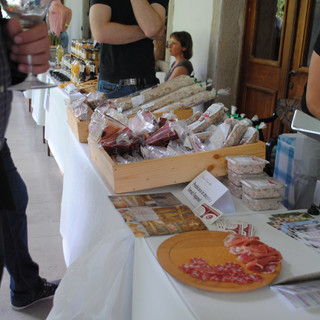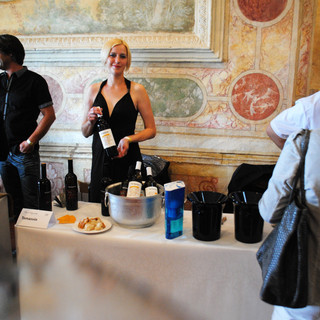The Vipava Wine and Cuisine Festival
- Andrea Seifert

- May 22, 2017
- 2 min read
Grape wines have been grown in the Vipava Valley since the Roman times. Local wines and vineyards were already described by Janez Vajkard Valvasor in his book from 1689. In 1844 Vinoreja, the famous first book on winegrowing was published in the Vipava Valley, whilst 120 years ago the valley witnessed the foundation of the first winegrowing co-operative in the Carniola (Kranjska) region.
Wherever we look we see vineyards, especially on the south-west side of the valley. The unique mixture of Mediterranean and Continental climate with bura wind, with warm soil and particular terroir, produce some 25 sorts of wine here. Among the white wines are: Rebula (Ribolla Gialla), Sauvignon Blanc, Malvasia, Welsh Riesling, and Chardonnay, while the reds include Merlot, Barbera, and Cabernet Sauvignon.
But, we didn’t come to Vipava for that. Instead, we’ve embarked on an oenology journey to the domestic varieties like Zelen, Pinela, Klarnica, Poljšakica, Glera, Pergulin, Vitovska Grganja, and Pikolit. Zelen and Pinela are considered to be unique to the Vipava Valley, which were almost forgotten in the past. Fortunately, in recent years, local people have started to again appreciate the heritage of their ancestors and there are many who grow both varieties.
The producers of Zelen of the Upper Vipava Valley founded the commercial interest Association of Konzorcij Zelen in 2003. In 2006 the Pinela’s producers also joined this association whose purpose is to protect the quality of local and unique varieties. All of these wines can be tasted at the local wine road or in the restaurants.
The Vipava Valley Wine Road is one of twenty such roads in Slovenia and one of four in the Primorska region. With 30 wine villages and its farmers it is also one of the biggest of its kind, and is well-marked by the signposts. The basic offer is high quality wines, but guests can also taste local products, foods, and drinks. Together with natural and historical sights, it can be an excellent day-out or more, depending on your love for wine. Many paths are also made for cyclists, so cyclotourism combined with wine is very popular here.
Each year in May, the Zemono Manor hosts the traditional Flavours of the Vipava Valley wine and culinary festival. Our visit to the festival was a highpoint of our tour, as all the important wine makers were there. We were focused on producers of Zelen and Pinela, but also other sorts, whose combined characteristics were floral scents, rich bouquet, and often barriqued wines.
Another excellent thing in this Festival is the opportunity to try local traditional products. One of these is prosciutto, named after the Kras region. Despite numerous technological innovations locals have retained the traditional manner of producing this speciality. Just salt, fresh air, the northern wind we call the burja, and careful watching and waiting ensure that after 12-16 months maturing you’ll be able to slice with pleasure into a truly tasty, ruby red and succulent dry-cured ham with and irresistible aroma.
The region is also famous for its cow, sheep, and goat cheese products, excellent fruits, and many other gastronomy delights. All of these can be tasted in the restaurants, inns, and agritourisms of Vipava.
































Comments